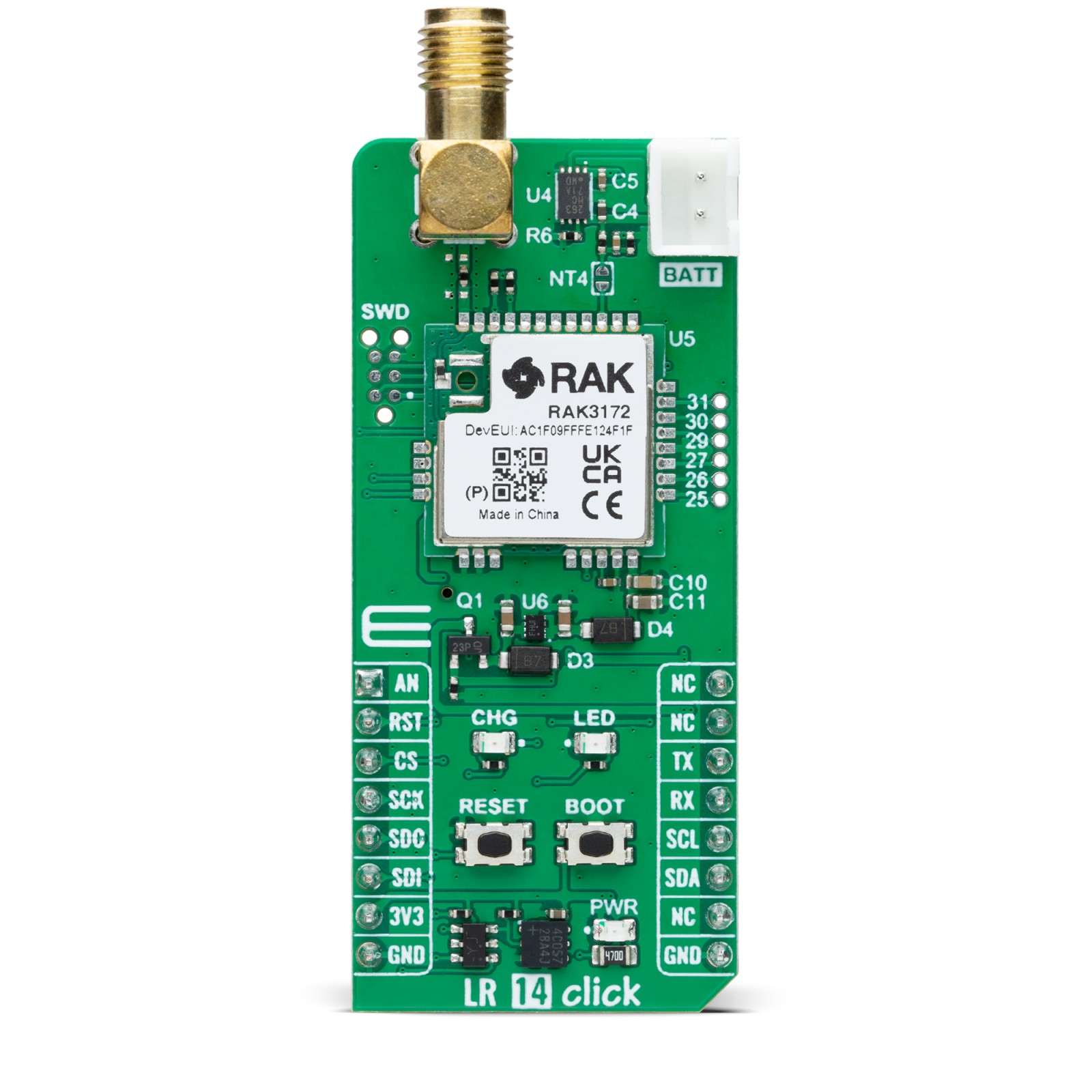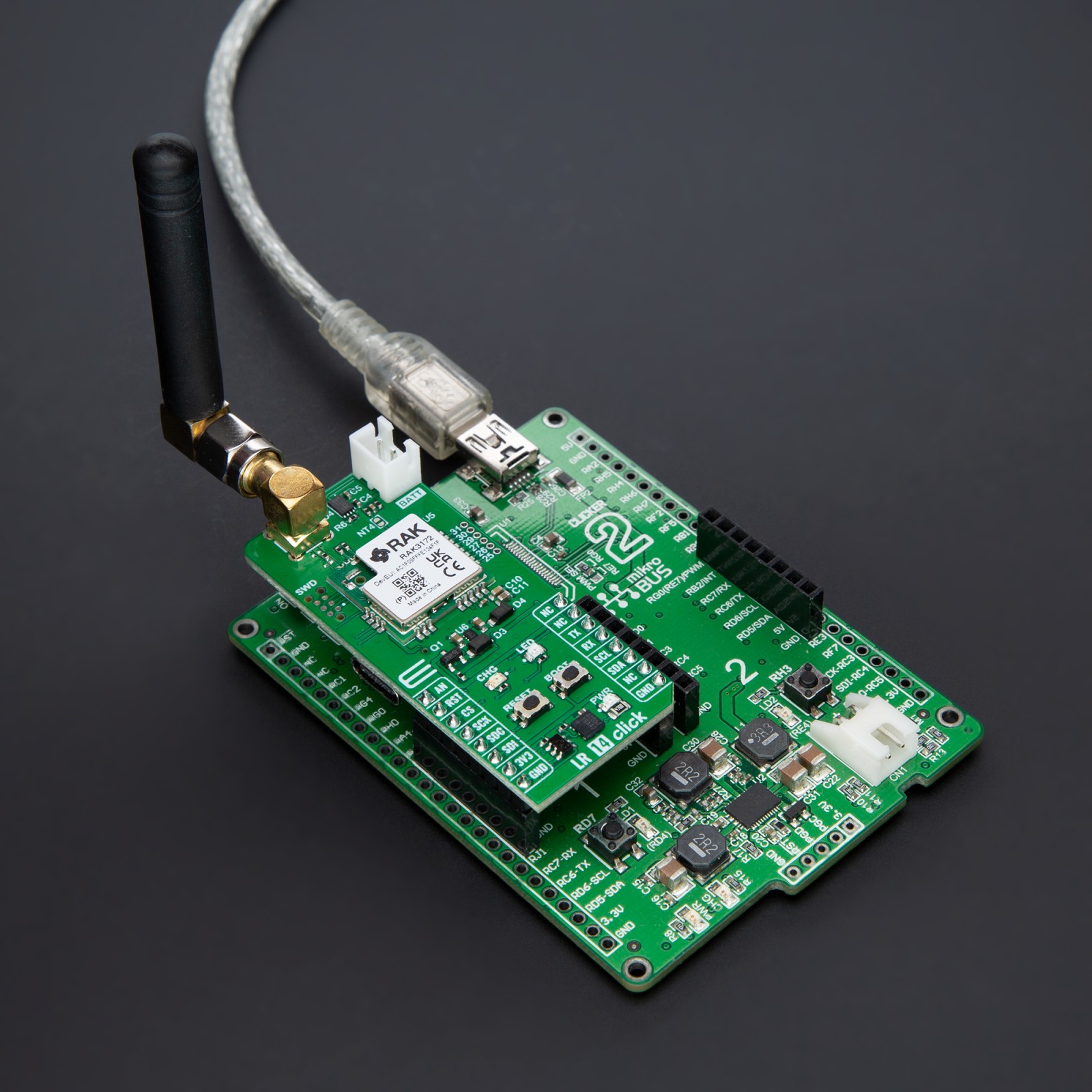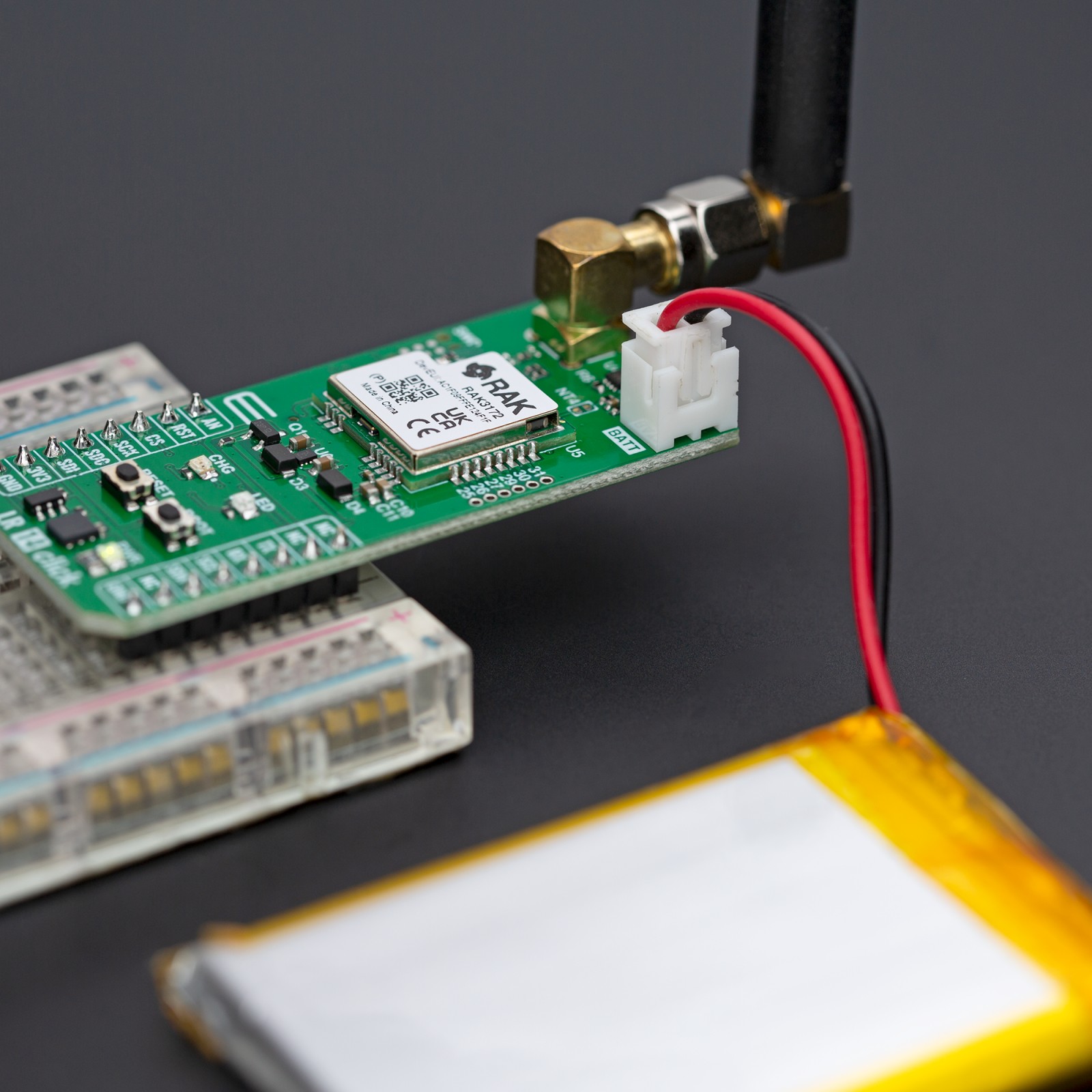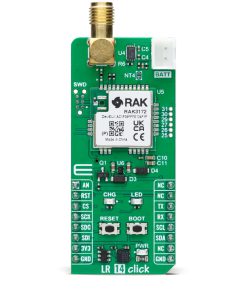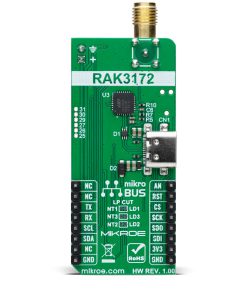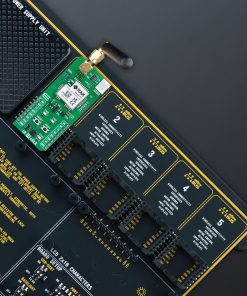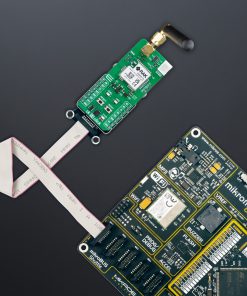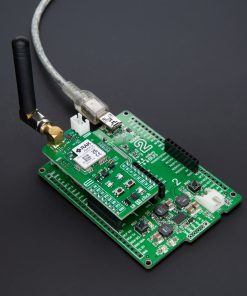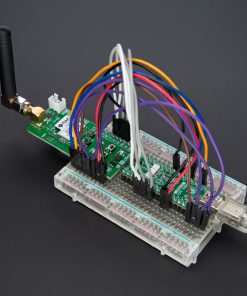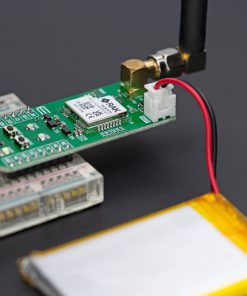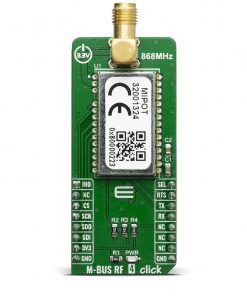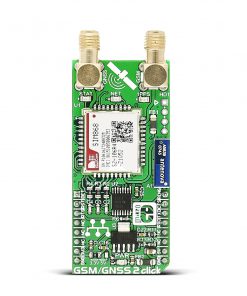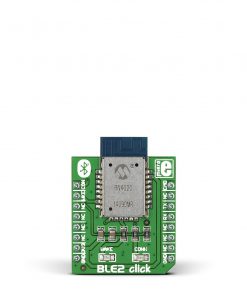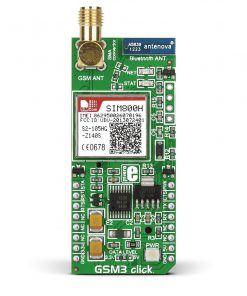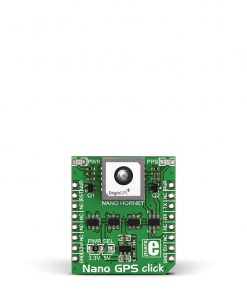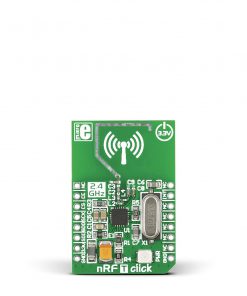LR 14 Click – 868MHz
R1,000.00 ex. VAT
LR 14 Click - 868MHz is a compact add-on board for low-power, long-range wireless communication in IoT networks. This board features the RAK3172, a Class A/B/C LoRaWAN 1.0.3-compliant module from RAKwireless Technology, featuring the STM32WLE5CC ARM Cortex-M4 32-bit chip. This board supports LoRaWAN and LoRa Point-to-Point communication modes and integrates multiple frequency bands for flexibility across various regions. Key features include UART, SPI, and I2C interfaces, a USB Type-C connector for power and configuration, and a rechargeable battery option for standalone operation. Additional functionality is provided by SWD and BOOT buttons for firmware management and configurable GPIO pins for customization. LR 14 Click is ideal for long-distance, low-power communication applications, such as remote sensing, asset tracking, and IoT deployments.
LR 14 Click - 868MHz is fully compatible with the mikroBUS™ socket and can be used on any host system supporting the mikroBUS™ standard. It comes with the mikroSDK open-source libraries, offering unparalleled flexibility for evaluation and customization. What sets this Click board™ apart is the groundbreaking ClickID feature, enabling your host system to seamlessly and automatically detect and identify this add-on board.
Stock: Lead-time applicable.
| 5+ | R950.00 |
| 10+ | R900.00 |
| 15+ | R850.00 |
| 20+ | R818.00 |

